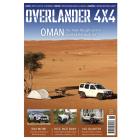Towing Knowledge From Svtech
SvTECH IS A COMPANY that sells knowledge rather than products. Established in 1993, it has become a leading authority on re-rating vehicles – for such reasons as to increase their payload capacity or reduce their gross weight for licensing and emissions purposes. SvTech specialises in offering technical support to vehicle manufacturers in matters relating to vehicle type approval, with specific emphasis on payloads and braking systems. The company has issued advice to 4x4 owners titled ‘what to know before you tow’: ‘There is an argument that bigger is better when it comes to 4x4s and their towing allowances, as people seek to pull ever larger trailers or caravans. Indeed, nothing can come close to the likes of a Land Rover Defender or Isuzu D-Max with a possible 3500kg capability for towing. Popular vehicles such as the Nissan Navara, Mitsubishi L200 or Toyota Hi-Lux may only have a towing allowance of around 2600- 2800kg which, to many drivers, won’t fit their requirements for towing a 3-3.5 tonne trailer. ‘In most cases, this allowance is calculated by subtracting the maximum weight of the vehicle (GVW) from the overall Gross Train Weight (GTW), leaving the maximum that you can legally tow – regardless of whether or not the trailer is capable of more. However, you may find that what the manufacturer advertises as a towing allowance is achieved by sacrificing some of the vehicle’s payload. ‘For example, the declared towing allowance may be 3500kg, GVW 3050kg and GTW 6000kg. That’s a difference of 2950kg – so in order to tow the full allowance of 3500kg, you would need to ensure the laden weight of the vehicle didn’t exceed 2950kg, not 3050kg. ‘It can be confusing. So the only way of knowing what you can carry and what you can tow is by checking both the vehicle’s VIN plate and the manufacturer’s spec sheet. You cannot simply guess that if the vehicle is not loaded up to a specific weight, you can ‘bump’ the remaining allowance on to the towing allowance. There may be other limiting factors about the vehicle, such as chassis strength, towbar rating or driveline and clutch ability that restrict the maximum amount on the trailer. ‘Once you’ve ascertained how much you can tow, or need to tow, you’ll need to make sure that the complete combined weight of vehicle and trailer doesn’t exceed the stated GTW. And to do this, you’ll need to get the truck and trailer weighed at a weigh bridge. ‘In addition to checking the weights the driver also needs to know that, where the vehicle and trailer combination exceeds 3.5 tonnes and is being used for commercial purposes, then barring a few exemptions you need to use a tachograph.’ SvTech says it has recently seen an increase in the number of 4x4’s being used for towing when overloaded - as well as a large number of GVW overloads. The company is also being asked to ‘downplate’ the GVW in some cars and 4x4s in order that their towing allowance (GTW) can be increased – but even then, this remains dependent upon the driver ensuring he does not overload the vehicle with passengers and luggage, and to ensure this they must weigh it. ‘Ignorance isn’t deemed a suitable excuse by the authorities,’ says SvTech. ’So don’t take any chances with your safety and that of other road users.’ For further advice on vehicle uprating and downrating, or general help on vehicle weights, visit www.svtech.co.uk
Do you drive an American import?
The trucks that come from over there routinely tow huge weights back home – but you may be surprised to know that nearly all American vehicles that come here have VIN plates that don’t show their GTW – meaning they’re not legally allowed to tow anything at all! ‘It’s irrelevant what the manufacturer may offer as a train weight on a spec sheet,’ says SvTech. ‘If there’s no figure shown for towing on the VIN plate, you are not authorised to tow.’

















